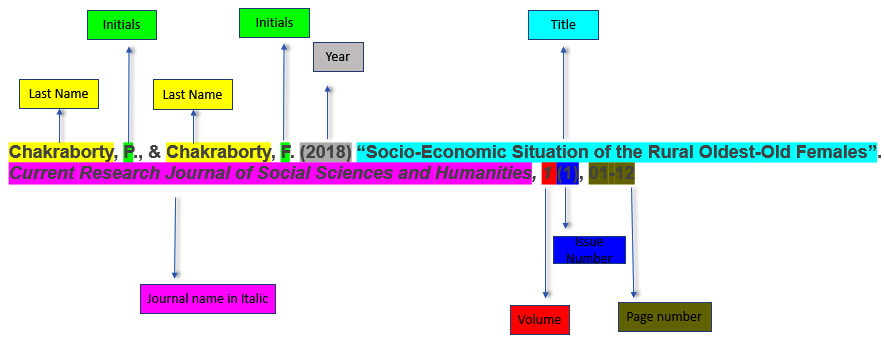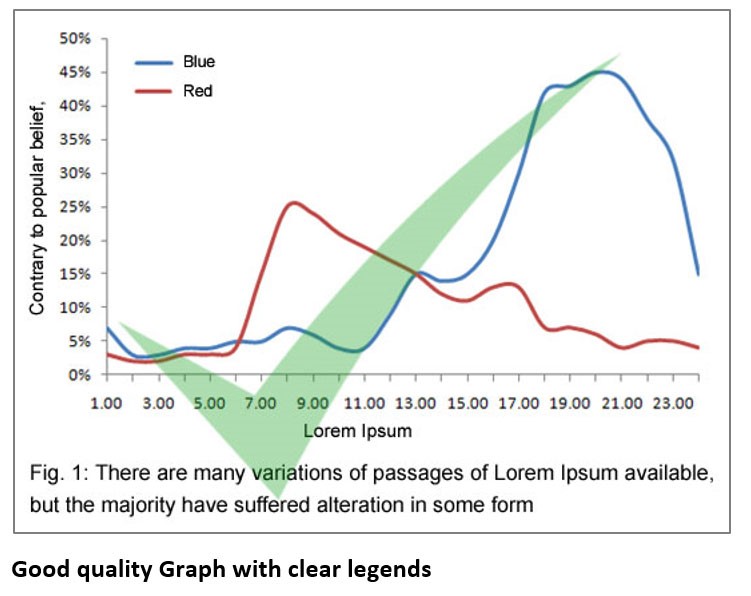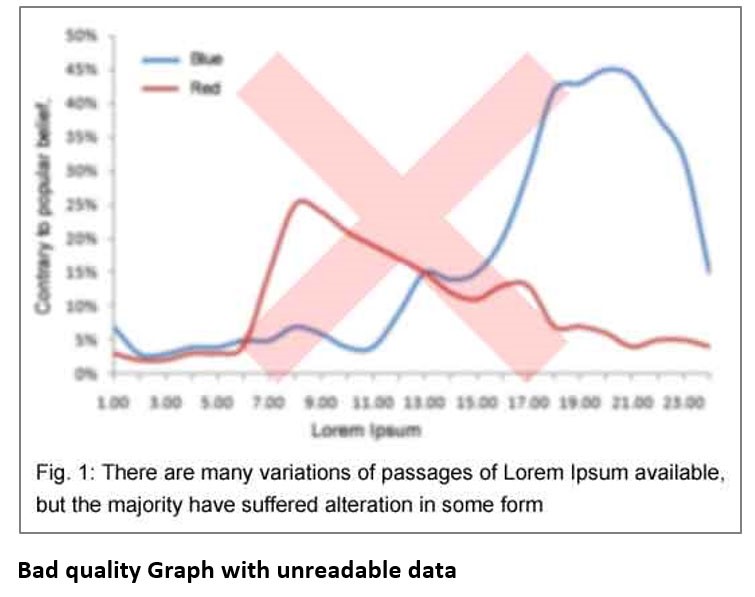The instructions to authors are divided into three sections
Pre Submission Information – Authors are advised to read these policies
How to prepare manuscript – Guidelines to prepare a manuscript
Pre-submission Checklist – Make sure to check it for efficient processing
1. Pre Submission InformationCurrent Research Journal of Social Sciences and Humanities is an open-access journal. It follows guidelines defined by:
COPE (Committee on Publication Ethics)
We suggest authors to make themselves aware of policies on ethical publishing practices defined by the above mentioned organizations.Current Research Journal of Social Sciences and Humanities advises the authors to read carefully the following policies:
a. Article Processing Charges:
The Article Processing Charges (APC) for each manuscript accepted for publication is Rs 4000/- for articles from India and $200 for foreign. Editorials, Commentaries and Book Reviews are published free of charge.
The journal does not have any submission fees. Please visit the link given below to know more about APC:
https://www.journalofsocialsciences.org/page/for-authors/article-processing-charges/.
b. Licensing / Copyright Policy:
As open access Current Research Journal of Social Sciences and Humanities follows the Attribution 4.0 International (CC BY 4.0)
c. Statement of Informed Consent:
Individual participants in studies have, the right to decide what happens to the (identifiable) personal data gathered, to what they have said during a study or an interview, as well as to any photograph that was taken.
The manuscripts that include details, images, or videos relating to individual participants, written informed consent for the publication of these must be obtained from the participants (or their parent or legal guardian in the case of children under 16) and a statement to this effect should appear in the manuscript.If the participant has died, then consent for publication must be sought from the next of kin of the participant.
Documentation showing consent for publication must be made available to the Editor on request.In cases where images are entirely unidentifiable and there are no details on individuals reported within the manuscript, consent for publication of images may not be required.
The final decision on whether consent to publish is required, lies with the Editor.
d. Ethics in publishing:
Current Research Journal of Social Sciences and Humanities' Publication Ethics and Publication Malpractice Statement is based, in large part, on the guidelines and standards developed by the Committee on Publication Ethics (COPE). Please see https://www.journalofsocialsciences.org/page/policies/publication-ethics-and-malpractice-statement/
e. Conflict of interest:
All authors are requested to disclose any conflict of interest including any financial, personal or other relationships with other people or organizations that can influence their work.
The conflict of interest is filled in a section in the Copyright Form and also mentioned in the manuscript.
Click here to download Copyright form
If there is no conflict of interest then following statement should be mentioned in the manuscript:
“The author(s) declares no conflict of interest.”
f. Declaration of Funding Sources:
Please provide the source of financial support if any in the Funding Source section in the manuscript.
g. Plagiarism:
By submitting articles to Current Research Journal of Social Sciences and Humanities the author attested the following:
None of the part of manuscript is plagiarized from other sources
Proper reference is provided for all contents extracted from other sources
Strong action will be taken against cases of plagiarism. The journal is a member of 'Crossref' and uses 'iThenticate' plagiarism detection tool for each article.
Read the Journal’s Plagiarism policy by clicking here.
h. Correction and Retraction Policy
1. Corrections
Corrections are published if the publication record is seriously affected with regard to the accuracy of published information. Corrections are published in the subsequent issue under Corrections and addendum.
2. Retractions
Retractions are done when the main conclusion of the paper is seriously undermined.
i. Authorship Policy:
Before publishing: Requests to add or remove an author, or to rearrange the author names, must be sent to the Editor from the corresponding author of the accepted manuscript and must include:
Reason why the name should be added or removed.
Emailed confirmation from all authors that they agree with the addition, removal or rearrangement.
A corrigendum will be issued if the author names are added, deleted, or rearranged in an article published online in coming issue
A declaration of contributions from individual coauthors in the preparation of the article should be submitted.
j. Withdrawal Policy:
Manuscripts may be withdrawn by submitting a letter to the editorial office stating the reasons for manuscript withdrawal and submitting the signed manuscript withdrawal form.If an author requests a withdrawal within 10 days of submission, the author is allowed to withdraw the manuscript without paying any withdrawal fee, however if authors withdraw manuscripts any time after review and acceptance, a withdrawal fee will have to be paid.
For India Rs. 1000/-
For Other countries $50/-
2. How to Prepare Manuscript
a. General Instructions:
Use MS word to prepare manuscript. Other open source word-processing software can also be used. Keep the format as per following instructions:
1. The manuscript fits the Aims & Scope of the journal.
2. The manuscript adheres to specified limits for word count, references, and figures/tables based on article types:
• Research article (6000 words, 30 references, 6 tables & figures combined)
• Review article (8000 words, 60 references, 8 tables & figures combined)
• Short communication (3000 words, 25 references, 3 tables & figures combined)
3. Keep the text in single column, normal font size 12, 1.5 line space.
4. Keep the text left aligned, do not justify the paragraph.
5. The text is written in good English.
6. Use the spell check and grammar check of your word processor program.
7. Check the quality of scanned figures. The legends should be clearly visible.
8. Place the tables and figures in the appropriate places
9. All relevant sources, including peer-reviewed articles, websites, books, and theses, are listed in the References section. The number of references adheres to the specified limit. If the theses referred to in the manuscript are from a pre-print edition or online repository, kindly declare them in the cover letter and reference them appropriately in the manuscript.
10. Include a cover letter with the manuscript that introduces your article, highlighting the research’s novelty and key outcomes.
The cover letter should specifically address the following :
• The submitted article’s type (original research article/review/short communication).
• Details such as the total word count of the manuscript (excluding tables and figure legends), the number of references, and the count of tables and/or figures included in the manuscript.
b. Title:
Title is important as it shows what your work is all about. Title should be:
Brief and concise
Do not use ‘&’ symbol and avoid using abbreviations
c. Authors Name and affiliations:
Authors name should follow the Title. Name should be as:
First Name Middle Name Last Name
Names should not include titles
Full names should be mentioned
Mention the ORCID ID for each author
Affiliation should be mentioned as superscript numbers
Multiple affiliation should be mentioned as superscript multiple numbers corresponding to institutions.
Corresponding author should be marked as superscript *
Email and corresponding authors address should be mentioned following the names
Example for title, names and affiliation:
Guidelines to authors for preparing manuscript:
Marsha Clark Mellow1, Minnie Van Ryder2* and Ivana Ben Withew3
1Dept. of Social Science, Name of University1, City1, Country1, Pin code1
2Dept. of Social Science, Name of University2, City2, Country2, Pin code2
3Dept. of Social Science, Name of University3, City3, Country3, Pin code3
Example for multiple affiliations:
Marsha Clark Mellow1, Minnie Van Ryder2* and Ivana Ben Withew1,2
1Dept. of Social Science, Name of University1, City1, Country1, Pin code1
2Dept. of Social Science, Name of University2, City2, Country2, Pin code2
3Dept. of Social Science, Name of University3, City3, Country3, Pin code3
Corresponding Author Email: ______________________
Corresponding Author Address: ______________________________________________
d. Abstract:
Abstracts should briefly reflect all aspects of the study, as most indexing databases list mainly abstracts.
Short Communications as well as Review Articles should have an Abstract.
e. Keywords:
Provide four to eight appropriate key words after abstract. Each keyword should be separated by “ , ” (Comma) or “ ; ” (semicolon)
Keywords should be arranged alphabetically with first letter of each word in capital
f. Introduction:
Start immediately after the keywords, as the next paragraph.
The Introduction should lead the reader to the importance of the study
Should tie-up published literature with the aims of the study and clearly states the rationale behind the investigation.
g. Materials and Methods:
Start as a continuation to introduction on the same page.
All important materials used along with their source shall be mentioned.
The main methods used shall be briefly described, citing references. New methods or substantially modified methods may be described in sufficient detail.
The statistical method should be clearly stated.
Current Research Journal of Social Sciences and Humanities refers to publish work that has been subjected to an appropriate statistical test at one level of significance.
h. Results:
All findings presented in tabular or graphical form shall be described in this section.
The data should be statistically analyzed and the level of significance stated.
Data that is not statistically significant need only to be mentioned in the text – no illustration is necessary.
All Tables and figures must have a title or caption and a legend to make them self-explanatory.
Results section shall start after materials and methods section on the same page.
i. Discussion:
This section should follow results, deal with the interpretation of results and convey how they help increase current understanding of the problem.
Unsupported hypothesis should be avoided.
The Discussion should state the possibilities the results uncover, that need to be further explored.
Results and discussion of results can also be combined under one section, Results and Discussion.
j. Conclusion:
Proper conclusion is required in all the articles.
k. Acknowledgement:
Acknowledgement will include the acknowledgement to the research team or any entity which has provided help during the work.
l. Funding Sources :
This section will include any funding sources along with the grant number (if any) provided to facilitate the research work.
If there are no funding sources then following statement should be mentioned:
"The author(s) received no financial support for the research, authorship, and/or publication of this article."
m. Conflict of Interest:
All authors are requested to disclose any conflict of interest including any financial, personal or other relationships with other people or organizations that can influence their work.
If there is no conflict of interest then following statement should be mentioned:
"The author(s) declares no conflict of interest."
n. Authors’ Contribution:
Authors are required to provide a statement detailing the specific contributions of each author to the manuscript.
Each author mentioned has significantly and directly contributed intellectually to the project and has given their approval for its publication.
o. Data Availability:
The manuscript incorporates all datasets produced or examined throughout this research study.
p. Permission to reproduce material from other sources:
(If applicable)
q. References:
Reference style: APA (American Psychological Association)
References should be numbered consecutively in the order in which they are first mentioned in the text (not in alphabetic order).
References should be cited in the text et al. format only
Use the style of the examples below:
Example: Journal article (print)
Perlstadt H. (2015). Experiment on Zimbardo’s Stanford Prison. Current Research Journal of Social Sciences and Humanities. 1(1), 01-45. DOI: https://dx.doi.org/10.12944/CRJSSH.1.1.04
Citation in text: (Author’s last name et al., Year)

Reference style for different sources:
|
Material Type |
Reference List/Bibliography |
|
A book in print |
Author(s) Name. (Year). Race equality in public health and education. Philadelphia: Ballière Tindall. |
|
A book chapter, print version |
Author(s) Name. (Year). Philosophy and the science of subjective well-being. In M. Eid & R. J. Larsen (Eds.), The science of subjective well-being (pp. 17-43). New York, NY: Guilford Press. |
|
An eBook |
|
|
ShAuthor(s) Name. (Year). ow biz training: Fun and effective business training techniques from the worlds of stage, screen, and song. Retrieved from http://www.amacombooks.org/ |
|
|
An article in a print journal |
Author(s) Name. (Year). How children change their minds: Strategy change can be gradual or abrupt. Developmental Psychology, 35, 127-145. |
|
An article in a journal without DOI |
Author(s) Name. (Year). The converging literacies center: An integrated model for writing programs. Kairos: A Journal of Rhetoric, Technology, and Pedagogy, 14(1), 38-48. Retrieved from http://kairos.technorhetoric.net/ |
|
An article in a journal with DOI |
Author(s) Name. (Year). Spatial cues more salient than color cues in cotton-top tamarins (saguinus oedipus) reversal learning. Journal of Comparative Psychology, 122, 441-444. doi: 10.1037/0735-7036.122.4.441 |
|
Websites - professional or personal sites |
The World Famous Hot Dog Site. (Year, date). Retrieved January 5, 2010, from http://www.xroads.com/~tcs/hotdog/hotdog.html |
|
Websites - online government publications |
U.S.A Department of Justice. (year, date). Trends in violent victimization by age, 1973-2015. Retrieved from http://www.ojp.usdoj.gov/bjs/glance/vage.htm |
|
Emails (cited in-text only) |
According to preservationist J. Mohlhenrich (personal communication, Date, year). |
|
Mailing Lists (listserv) |
Author(s) Name. (Year, Date). Chessie rescue - Annapolis, MD [Message posted to Chessie-L electronic mailing list]. Retrieved from http://chessie-l-owner@lists.best.com |
|
Radio and TV episodes - from library databases |
Author(s) Name. (Writer). (Year, Date). Beyond Vick: Animal cruelty for sport [Television series episode]. In NPR (Producer), Morning Edition. Retrieved from Academic OneFile database. |
|
Film Clips from website |
Author(s) Name. (Producer), Lacy, L. (Director), & Hawkey, P. (Writer). (Year). Mean Joe Greene [video file]. Retrieved from http://memory.loc.gov/mbrs/ccmp/meanjoe_01g.ram |
|
Photograph (from book, magazine or webpage) |
Author(s) Name. (Year). Ronald. [photograph]. Museum of Modern Art, New York, NY. Retrieved from http://www.moma.org/collection/object.php?object_id=108890 |
|
Artwork - from library database |
MaAuthor(s) Name. (Year). n with Baby. [photograph]. George Eastman House, Rochester, NY. Retrieved from ARTstor |
|
Artwork - from website |
Author(s) Name. (Year). Ronald. [photograph]. Museum of Modern Art, New York. Retrieved from http://www.tbc.org/collection/browse_results.php?object_id=108890 |
r. Tables
Only MS word table format should be used for preparing tables.
Tables should be numbered consecutively in numerals and bear a brief title.
Units of measurement should be abbreviated and placed below the column headings. Column headings or captions shall be in bold face.
It is essential that all tables have legends, which explain the contents of the table.
Tables should not be very large that they run more than one A4 sized page.
Example for table:
Table 1: Brief title for the table
|
Heading 1 |
Heading 2 |
Heading 3 |
Heading 4 |
|
data |
Data |
data |
data |
|
data |
Data |
data |
data |
|
data |
Data |
data |
data |
|
data |
Data |
data |
data |
|
data |
Data |
data |
data |
s. Figures:
Figures and scanned images should be of good quality and placed on appropriate places in the article.
1. Images should be High Resolution (300 DPI) in PSD, TIFF, JPEG, PNG Format
2. Text within the images should be clear and readable
3. Figures should be numbered consecutively in numerals and bear a brief title.
4. Graphs and bar graphs should preferably be prepared using Microsoft Excel and submitted as Excel graph pasted in Word.
5. Mention and properly cite the source of figure, if extracted from other source.
Example for images and illustrations

Good quality Graph with clear legends

Bad quality Graph with unreadable data
t. Biological nomenclature:
Names of plants, animals and bacteria should be in italics and proper nomenclature format.
u. Proof of Correction:
Once the article is accepted after successful peer review, the article is published online and a PDF in journal format is prepared.
A copy of this PDF file is emailed to corresponding author for proof check.
Ensure that all corrections are done in this proof as subsequent changes after this communication cannot be guaranteed.
The changes will be incorporated in the final version.
3. Pre submission Checklist
Authors are advised to check the items in following list and complete the manuscript accordingly. Submitting an incomplete entry will cause a delay in the publication process.
1. Read the Instructions to Authors and download Sample Manuscript as a guide
2. The format conforms to the Sample Manuscript Template
3. Title doesn’t have “&” and other non-standard abbreviations
4. Author names conforms to journal requirement
5. Corresponding author is marked with an asterisk sign (*)
6. Ensure to use accurate and complete affiliation
7. ORCID IDs of all the authors are mentioned
8. Keywords are added (minimum 5)
9. Tables are properly numbered and title added
10. Figures are properly numbered
11. Images should be High Resolution (300 DPI) in PSD, TIFF, JPEG, PNG Format
12. Text within the images should be clear and readable
13. All the sources are appropriately cited
14. All the References to be included in the reference section in proper format
15. The following sections are added :
• Acknowledgement
• Funding Source Statement
• Conflict of interest disclosure
• Authors’ Contribution
• Data Availability Statement
• Informed Consent Statement
• Permission to reproduce material from other sources
16. Article is spell and grammar checked
17. Copyright form with conflict of declaration is completely filled and signed by each author
